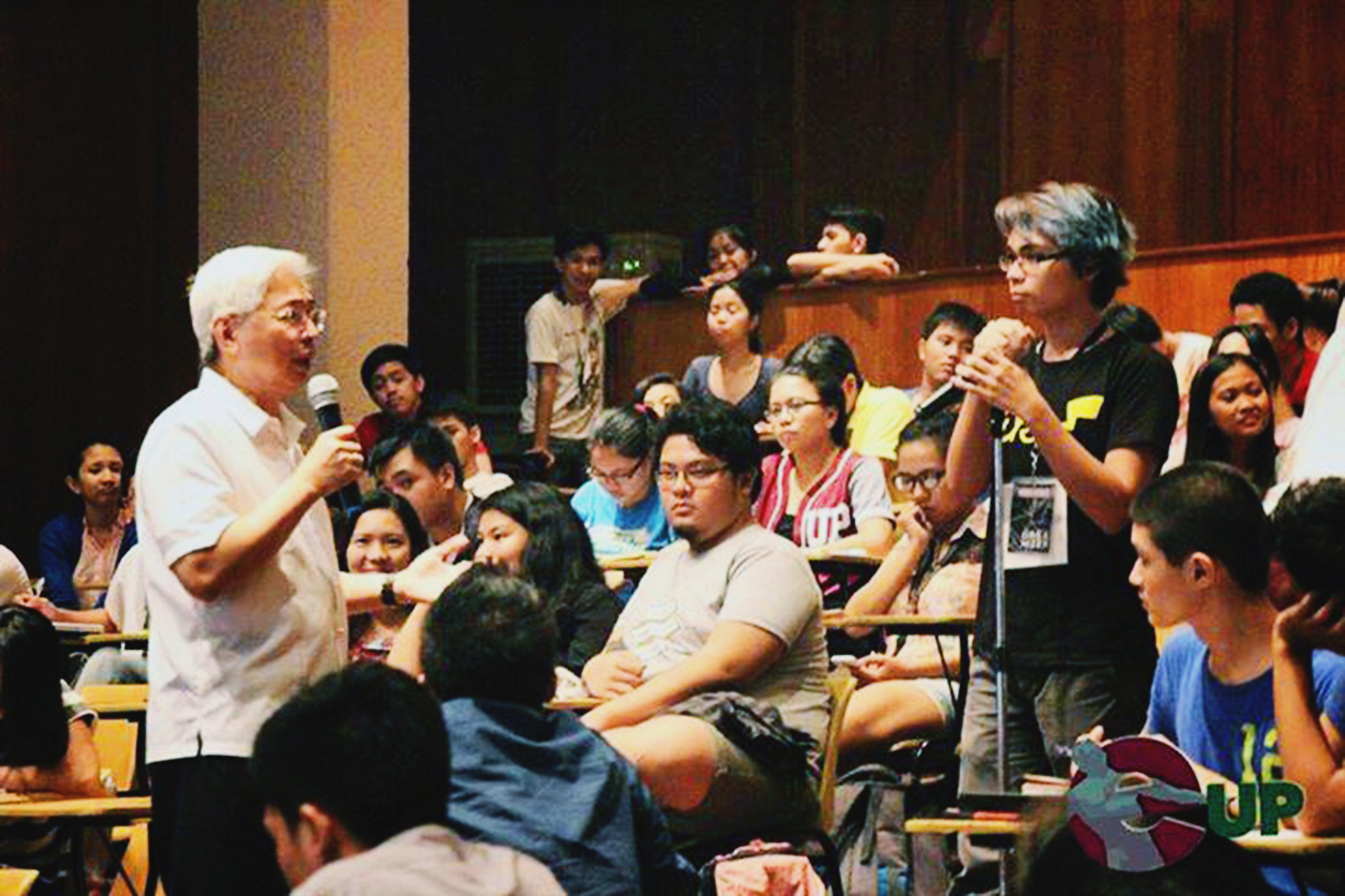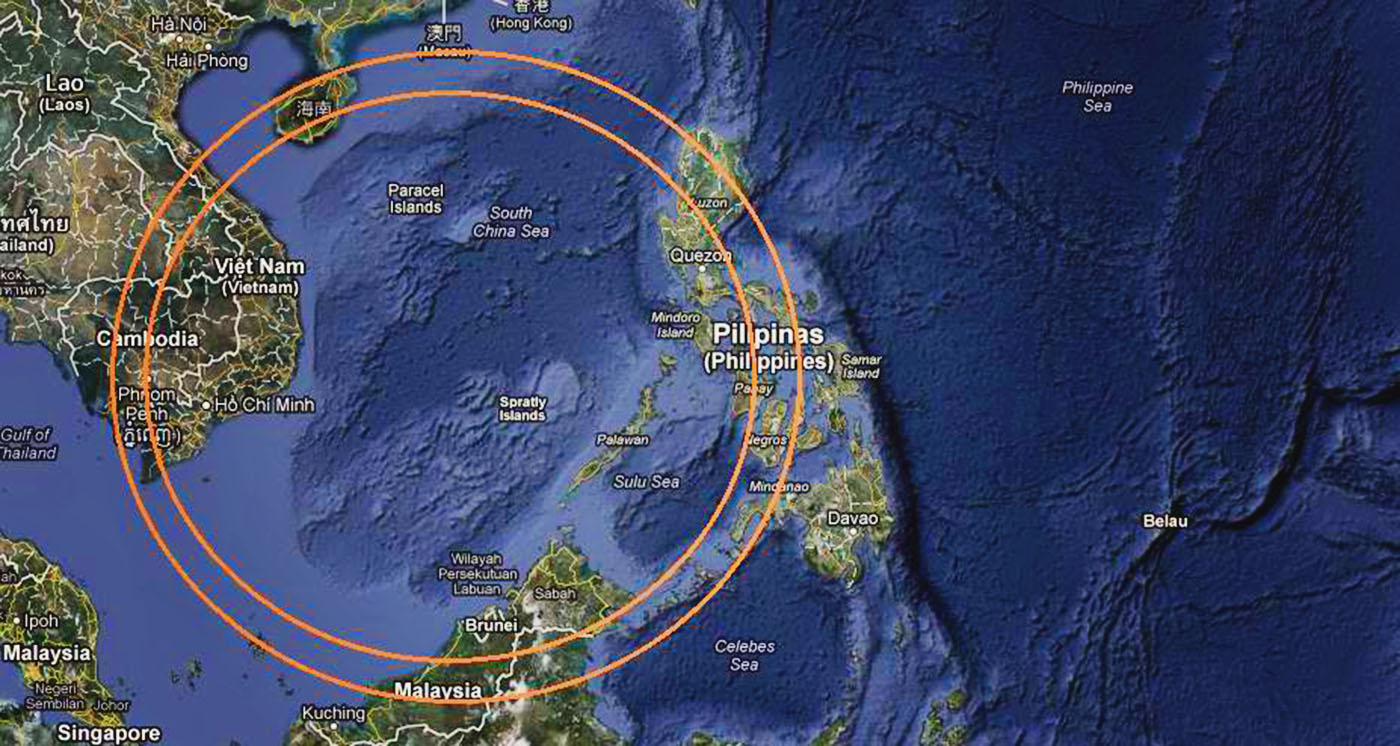BY LAINE BRINGUELO AND FAITH ESTHER BROWN
Despite its young age, terrorist group Islamic State of Iraq and Syria (ISIS) has already taken the world’s center stage for perpetrating suicide bombings, mass executions, and kidnappings—instilling fear and terror around the world.
Only this year, a series of ISIS-inflicted attacks such as the Beirut suicide bombings, Paris terror attacks and Charlie Hebdo shooting have plagued the Middle-East and even Europe, resulting in thousands of deaths.
What seems more intriguing about this recently-formed group is how it continues to stand against almost all its neighbors—with some of them established even in the ancient times—and practically the whole world who are opposed to their deadly extremist acts.
But ISIS and its notoriety did not emerge overnight. It was the product of a complex series of events in the past that have led to the emergence of this group.
The rise of ISIS
Its genesis roots back to the 1979 Soviet invasion of Afghanistan, long before ISIS existed. The Soviet Union sent troops back to Afghanistan in support of its communist government against the anti-communist rebels, known as the mujahideen or “those who engage in jihad” during the Afghan War from 1978 to 1992.
Many men from the middle east joined the mujahideen, including a young Saudi named Osama bin Laden and a Jordanian radical named Abu Musab al-Zarqawi, who both developed extremist views.
When the Soviet Union withdrew in 1989, the rebels returned to where they came from. Both bin Laden and Zarqawi eventually formed groups of their own.
Bin Laden formed the terror group Al-Qaeda in 1989 while Abu Musab al-Zarqawi founded the group Jamaat al-Tawhid wa-l-Jihad in 1999, which initially sought to overturn the Jordanian monarchy.
ISIS and its notoriety did not emerge overnight. It was the product of a complex series of events in the past that have led to the emergence of this group.
On September 11, 2001, Al-Qaeda held a series of suicide attacks in the U.S., which killed over 3,000 people in New York and in Washington D.C. This led to former U.S. President George W. Bush declaring a “War on Terror” in September 2001 against jihadist groups.
The U.S. invaded the Taliban-ruled Afghanistan, where Al-Qaeda took refuge. To evade the U.S. attacks, Bin Laden fled to Pakistan, while al-Zarqawi ran off to Iraq.
In 2003, troops from the U.S. together with troops from Australia, Poland and the United Kingdom invaded Iraq and dubbed it as the Operation Iraqi Freedom or the Operation Enduring Freedom.
George Bush’s administration had claimed Iraq had weapons of mass destruction (W.M.D) and gave Iraqi President Saddam Hussein an ultimatum to leave Iraq, in order for a disarmament to ensue, during his public address on March 17, 2003.
Hussein refused, thus, the U.S. and its coalition attacked Iraq on March 2013. The coalition troops successfully invaded Baghdad in April 2003 and Saddam Hussein fled. On May 1, 2003, Bush finally declared the war was over, yet U.S. troops remained for over seven years.
After Saddam Hussein fled, a Sunni insurgency took place. Sunni is an Islam sect, which consists of 84-90% of Muslims around the world. Al-Zarqawi joined the insurgency, and his group became responsible for a series of bombings and beheadings in Iraq.
Al-Zarqawi’s group eventually merged with Al-Qaeda in 2004, forming the Al-Qaeda in Iraq (AQI).
However, according to an article by Washington Post, AQI went beyond the tactics and beliefs of bin Laden’s al-Qaeda and attacked fellow Muslims in Iraq as well, which led to a civil war between the Shia and Sunni Muslims in Iraq.
In 2006, al-Zarqawi brought together a number of Sunni factions and formed the Majlis Shura al-Mujahedin (MSM). Shortly after that, al-Zarqawi died due to an airstrike in Baghdad on June 8.
The MSM then re-established itself as the Islamic State of Iraq (ISI) under new leader Abu Omar al-Baghdadi. But when Al-Baghdadi died in 2010, he was succeeded by Abu Bakr al-Baghdadi. ISI eventually expanded to Syria in 2013 and changed its name to Islamic State of Iraq and Syria (ISIS).
The MSM then re-established itself as the Islamic State of Iraq (ISI). When ISI’s leader Al-Baghdadi died, the group expanded to Syria and changed its name to Islamic State of Iraq and Syria (ISIS).
In February 2014, Al-Qaeda renounced its long-standing affiliation with ISIS. Al-Qaeda admitted that ISIS’s intractability and lack of consultation and teamwork rendered them to repudiate any connection with ISIS.
In an audio recording released on June 29, 2014, shortly after Al-Qaeda’s renouncement of ISIS, the jihadist group promoted itself into a “caliphate,” setting Abu Bakr al-Baghdadi as its “caliph” and “the leader of Muslims everywhere.” However, this declaration was criticized by fellow Muslims.
In an article by CBS news, a spokesman for jihadist group Army Islam called ISIS “delusional” and “living in a fantasy world.”
The goal of ISIS
ISIS aims to reincarnate the ancient Muslim caliphate. It demands all Muslims to adhere to it and vows to purge all who will not follow.
ISIS follows the austere Sunni branch called Wahhabism. According to an article by the Huffington Post, Wahhabism proponent Abd al-Wahhab demanded that all Muslims must adhere to and follow a single Muslim leader, the Caliph.
ISIS aims to reincarnate the ancient Muslim caliphate. It demands all Muslims to adhere to it and vows to purge all who will not follow.
Wahhab further wrote, those who would not follow “should be killed, their wives and daughters violated, and their possessions confiscated.”
ISIS used this goal to justify their acts of mass executions, bombings, beheadings, and terror not only within the Iraq or Syria, but also in other parts of the Middle East, France, the U.S., and other parts of the world resulting to large numbers of casualties, exiles, and destruction.
ISIS’ 2015 attacks
The terrorist group has been known to attack mosques, hotels, busy city streets and other civilian targets. Since January, the civilian death toll outside Iraq and Syria has risen to nearly a thousand.
In January 2015, the Charlie Hebdo shooting took place in France wherein 12 people were killed and 11 were injured. The incident was linked to ISIS because a video of one of the three gunmen declaring allegiance to ISIS surfaced. On the same month in Libya, the terror group’s Tripoli affiliate killed at least eight people during an armed assault of a hotel. ISIS’ Sinai affiliate also killed 24 soldiers, six police officers and 14 civilians during coordinated bombing attacks in Egypt.
The terrorist group has been known to attack mosques, hotels, busy city streets and other civilian targets. Since January, the civilian death toll outside Iraq and Syria has risen to nearly a thousand.
ISIS claimed responsibility for the attack that occurred at Tunisia’s National Bardo Museum which killed 22 people, mostly European tourists, last March. An affiliate of the terror group also did the suicide strikes on mosques in Yemen that ended the lives of more than a hundred of people.
The attacks in these countries continued as ISIS killed 13 people with simultaneous car bombings at military checkpoints in Libya and at least 12 people in separate attacks on the Egyptian military in April. An ISIS affiliate also released a video showing 15 government soldiers being killed in Yemen.
More ISIS-related attacks were recorded in the succeeding months. Two men who supported the terror group opened fire in a Dallas suburb last May. They were acknowledged by the terror group later on as “soldiers of caliphate”. A suicide bomber also attacked a mosque in Saudi Arabia that killed at least 21 people and injured more than a hundred.
In June, a militant branch was reported to be responsible for a series of car bombings that killed at least 30 people in Yemen. In Tunisia, a gunman killed 40 people, mostly British tourists, at a hotel. The first major militant attack in more than 2 decades happened in Kuwait when one of its oldest mosques was bombed, killing 27 people.
Terrorism continued to spread in the Western society as an ISIS-affiliated group killed dozens of soldiers in coordinated attacks on Egypt; a citizen with ties to ISIS killed 32 people at a cultural center in Turkey; the killing of more than 40 people in separate bombing attacks of different mosques in Yemen; and blowing up of a Russian passenger jet over Egypt that killed all 224 people on board.
The most recent attack alarmed the whole world as 129 people were killed and over 300 people were injured in different locations of Paris.
Just last November, another suicide bombing killed at least 43 people and wounded over 200 others in Beirut. ISIS militants claimed they were responsible for the said attack.
The most recent attack alarmed the whole world as 129 people were killed and over 300 people were injured in different locations of Paris: the vicinity of the rue Alibert, the rue de la Fontaine-au-Roi, the rue de Charonne, the Bataclan theatre, and avenue de la République. The said tragedy is known to be the worst in the history of Paris, as it forced France to launch airstrikes against ISIS in Iraq and Syria.
According to a report by the New York Times, the American and European intelligence officials said the recent attacks in Paris and Beirut and the downing of a Russian airliner in Egypt were the first results of a centrally planned terrorism campaign by a wing of the Islamic State leadership.
Counter-attacks
As the war against the Islamic State spreads around the world, allies in the fight against ISIS strengthen attacks on the terrorist group’s strongholds in Syria and Northern Iraq.
A United States-led coalition has been attacking ISIS in Syria with airstrikes since August 2014. By November this year, they have already targeted ISIS with a total number of 8,289 airstrikes – 5,432 in Iraq and 2,857 in Syria. They are the primary force leading the campaign against terrorism.
On December 14, US President Barack Obama said that his administration continues to reassess and develop strategies to fight ISIS. According to him, they are now “hitting ISIL harder than ever.”
As the war against the Islamic State spreads around the world, allies in the fight against ISIS strengthen attacks on the terrorist group’s strongholds in Syria and Northern Iraq.
Following the huge attack last November in Paris, French President François Hollande pledged to build a global military coalition against ISIS. He met with leaders of the U.S., Russia, Germany and Britain separately, and the key nations agreed unreservedly on the necessity of stopping ISIS terrorism.
Other countries which are not part of the US-led coalition such as Russia are also attacking the terror group.
Last July, Turkey launched its first airstrike against ISIS after ISIS conducted a cross-border attack.
However, tension grew between Russia and Turkey when Turkey shot down a Russian plane because the plane reportedly violated the Turkish airspace. Russian President Vladimir Putin, on the other hand, accused Turkey of shooting down the plane to protect secret oil trade with the terrorist group ISIS.
Claiming to target ISIS, Russians began to launch airstrikes in Syria. However, the US and other sources said the attacks are mainly targeting the rebels fighting against the Syrian government, which is an ally of Russia.
ISIS’ influence continues to spread around the world, but the coalitions that try to stop them seem to misunderstand who is the common enemy.
Recently, Saudi Arabia and fellow 34 Muslim nations also formed their own coalition against the terrorist group which they referred as a “disease”. Their joint operations will be based in Riyadh.
The coalition was formed amid criticism that Arab states have not done enough to fight ISIS.
ISIS’ influence continues to spread around the world, but the coalitions that try to stop them seem to misunderstand who is the common enemy. They criticize and doubt their own allies’ intentions, and they cannot agree on long-term goals and priorities. This hinders the countries’ strength and intelligence on strategizing and implementing new approaches to defeat the terror group.
Just as what Martin Reardon, the vice president of the Soufan Group, said: “everyone has to have the same desired end state” for a strategy to evolve.
Header image from muslimmatters.org





